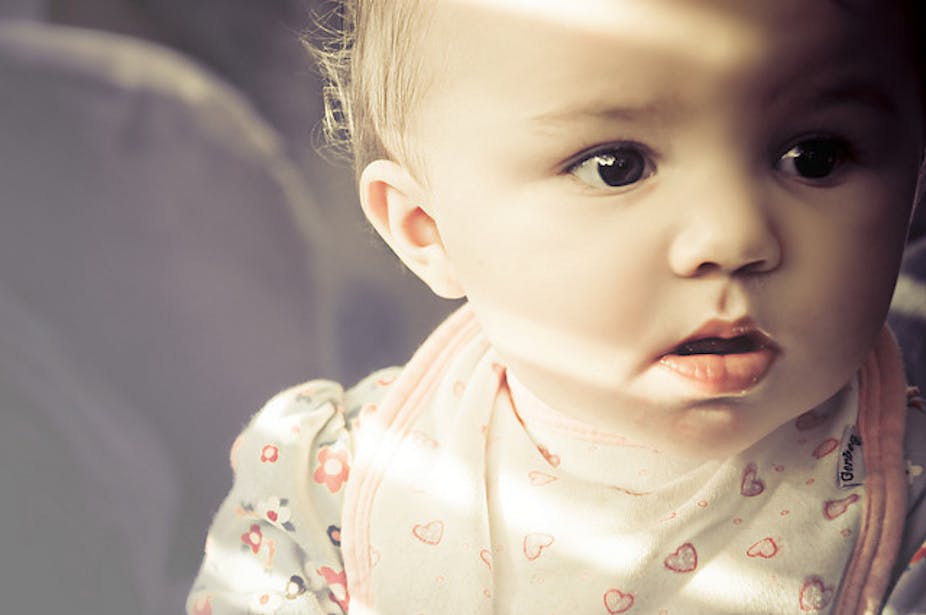For parents of children with autism spectrum disorder (ASD), the diagnostic process can be a long and stressful journey. Behavioural signs of ASD can appear around the child’s first birthday when he fails to respond to his own name or to use a pointing gesture. Language and learning are also often delayed.
But new research shows autism could be identified in infants as young as six months, using a marker of brain activity in response to shifts in others’ gaze. This raises the possibility of earlier diagnosis and better management of the condition in the child’s early years.
The study, which I co-authored as a researcher on the British Autism Study of Infant Siblings team (based at Birkbeck College in London), is published in the current issue of Current Biology.
Our research team followed 104 infants aged six- to ten-months until their third birthday. Around half had an older sibling with ASD and were therefore at high genetic risk of also developing ASD. The other infants were a low-risk comparison group. At the three-year visit, we found around a third of the high-risk infants had developed ASD.
When aged between six and ten months, we showed the infants video clips of an actor whose eyes moved back and forth between gazing directly at the infant, to gazing away. We measured the infants’ patterns of brain activity (known as event-related potentials) while they watched the clips, using sensors positioned on their scalp.

Many of the infants whom we later diagnosed with ASD showed a different brain response to these gaze-shift clips than the infants without ASD. The infants with ASD seemed to process the two parts of the gaze shift – looking toward versus looking away – in a similar way. By contrast, the brains of infants developing more typically processed these aspects in quite different ways.
Human brains show a particular response when processing others’ faces and eye-contact – this is very important for normal social interaction.
We have long known that children diagnosed with ASD show unusual use of eye contact and their brains also respond differently to others’ gaze. But this is the first time researchers have observed atypical brain responses in infants with ASD, well before any clear behavioural symptoms have emerged.
The more we know about early signs of ASD, whether behavioural or in the brain, the closer we get to earlier diagnosis and earlier intervention. Recent research shows early intervention can lead to better outcomes for children with ASD. By improving their early skills for social interaction and learning, we can set children up to achieve their best in later life.

Limitations and next steps
Given the small size of our study sample (17 infants who developed ASD), this result will need to be shown again with other groups of infants and in larger numbers.
It’s important to note that the unusual brain response shown in the study did not perfectly predict later ASD; some infants with this response were not later diagnosed, and vice versa.
A brain-based method such as this will need substantial improvement before it can be used as a clinical tool for early detection. And rather than a stand-alone tool for ASD diagnosis, it would likely be used alongside other measures including behaviour observation and standardised developmental tests.
ASD affects around 1% of the population and occurs along a spectrum, from severely impairing and more easily-diagnosed symptoms, to much milder presentation, which may go undetected for years. Future brain-based studies of autism might also help us to better understand the variability of ASD symptoms and developmental pathways right across the spectrum.

